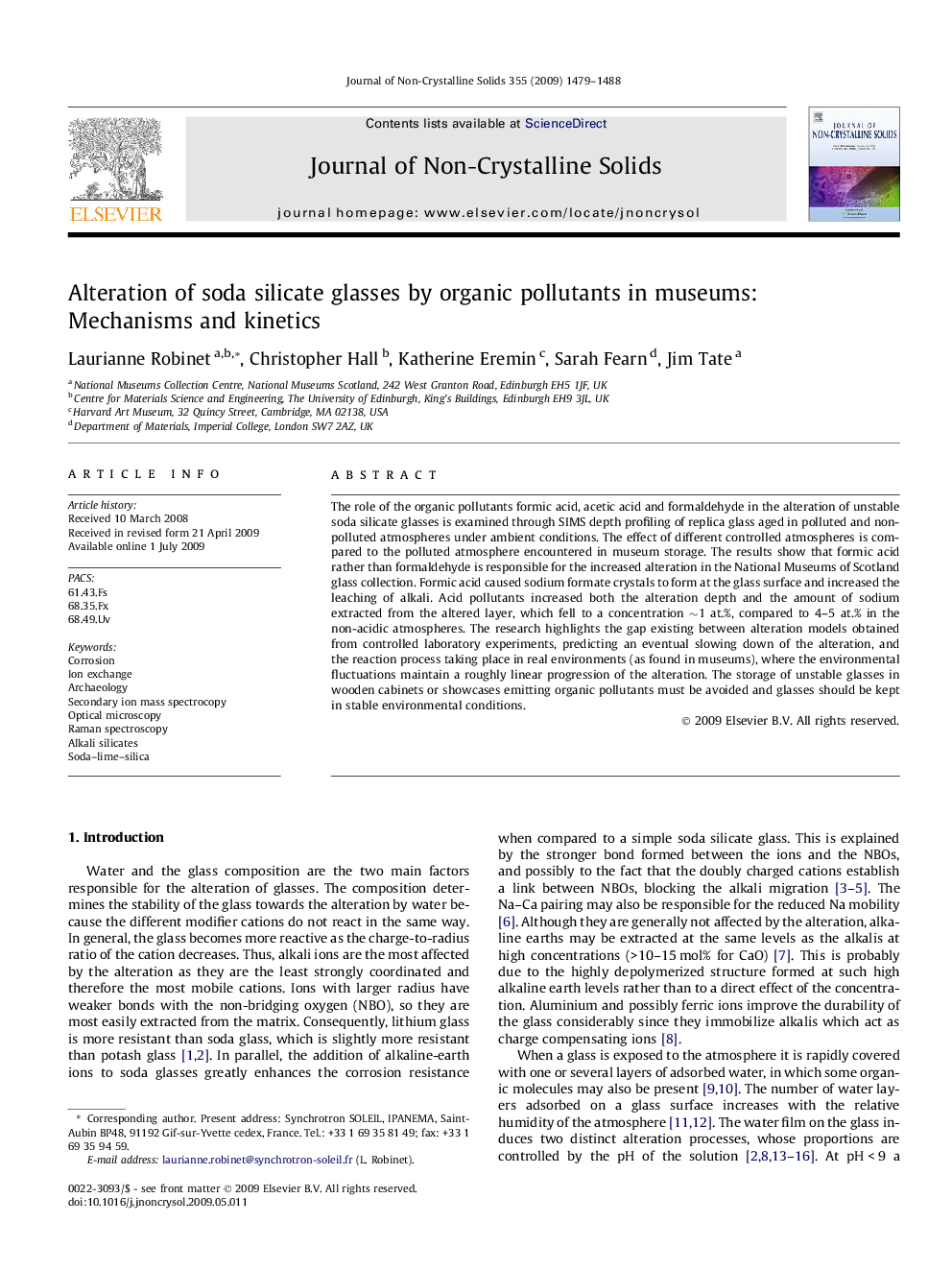| Article ID | Journal | Published Year | Pages | File Type |
|---|---|---|---|---|
| 1482414 | Journal of Non-Crystalline Solids | 2009 | 10 Pages |
The role of the organic pollutants formic acid, acetic acid and formaldehyde in the alteration of unstable soda silicate glasses is examined through SIMS depth profiling of replica glass aged in polluted and non-polluted atmospheres under ambient conditions. The effect of different controlled atmospheres is compared to the polluted atmosphere encountered in museum storage. The results show that formic acid rather than formaldehyde is responsible for the increased alteration in the National Museums of Scotland glass collection. Formic acid caused sodium formate crystals to form at the glass surface and increased the leaching of alkali. Acid pollutants increased both the alteration depth and the amount of sodium extracted from the altered layer, which fell to a concentration ∼1 at.%, compared to 4–5 at.% in the non-acidic atmospheres. The research highlights the gap existing between alteration models obtained from controlled laboratory experiments, predicting an eventual slowing down of the alteration, and the reaction process taking place in real environments (as found in museums), where the environmental fluctuations maintain a roughly linear progression of the alteration. The storage of unstable glasses in wooden cabinets or showcases emitting organic pollutants must be avoided and glasses should be kept in stable environmental conditions.
